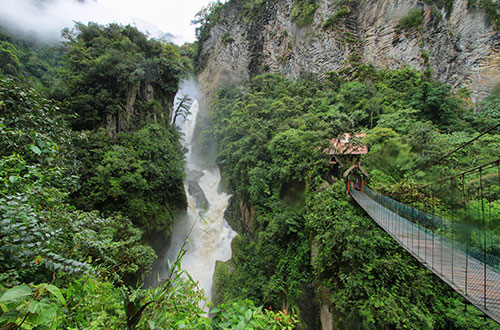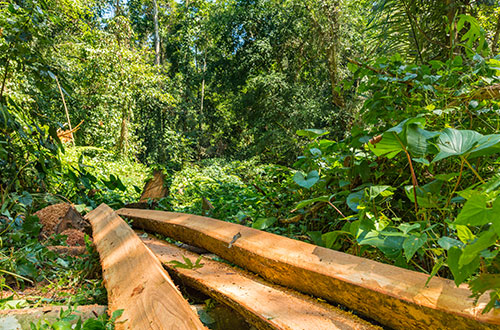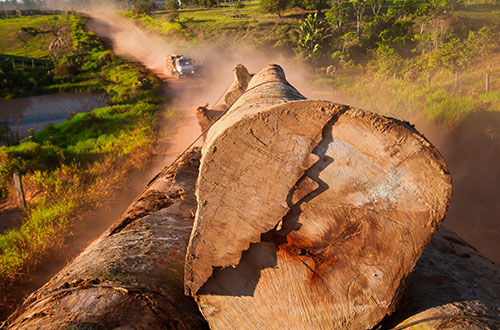AND FAIR USE OF WOOD.
THE IMAGE OF TROPICAL TIMBER.
Years of campaigning to highlight and denounce the abuses in the tropical timber-producing countries of this world have contributed to the material’s negative image — and rightly so. But circumstances have changed considerably in the meantime. There are still isolated examples of overutilisation in tropical rainforests in Central and South America and in parts of Asia. That is a fact. However, they are now the exceptions and no longer the rule. Exporting countries have made enormous strides in their forest management and have established systems that prevent overutilisation and go even farther to ensure legal and sustainable timber harvesting. Since 2013, the European market has been governed by a regulation that prohibits the import of illegally logged timber. The importer must prove the legality of the timber in accordance with a verified due diligence obligation.


What good is safe tropical timber if no one buys it? As happens to all goods that are not purchased, the price falls after a certain time — and wood is no exception to this economic law. The effects, however, are catastrophic because, as the price of wood falls, forest in the tropics decline in value. A very common consequence is that the forest areas are converted to other uses. Plantations for soy, palm oil and livestock farming are created — all forms of land use that will put an end to the forest’s climate protection function for many decades to come. The purchase of safe tropical timber, on the other hand, contributes directly to the preservation of forests. Consumer can even take this one more step by buying wood products certified by sustainability seals such as FSC® and PEFC. FSC and PEFC set their own standards that, similar to Fairtrade, ensure compliance with social aspects and the working conditions of forest workers. The main objective of such certifications is, of course, the safe production of sustainable timber. Certified wood is slightly more expensive, but the environment, the climate and forest conservation should be worth the additional cost to us.

Tropical timber is, almost without exception, superior to all our domestic woods in terms of strength, durability and the many different ways it can be used.
- Certified tropical timber is sustainable and ensures the conservation of the value of tropical forests.
- Sustainably managed tropical forests have comparatively high biodiversity. Their biodiversity is comparable to a completely unmanaged natural forest.
- Sustainable tropical timber is a climate saver: it binds the greenhouse gas CO2 for a very long time.
- Wood is the most environmentally friendly building material on earth. And this earth must also be protected from predatory exploitation. Compared to other building materials such as steel and concrete, as much as 86 percent of harmful greenhouse gases can be eliminated by using wood as a building material.
- Sustainably managed (tropical) timber remains with us as a raw material.


